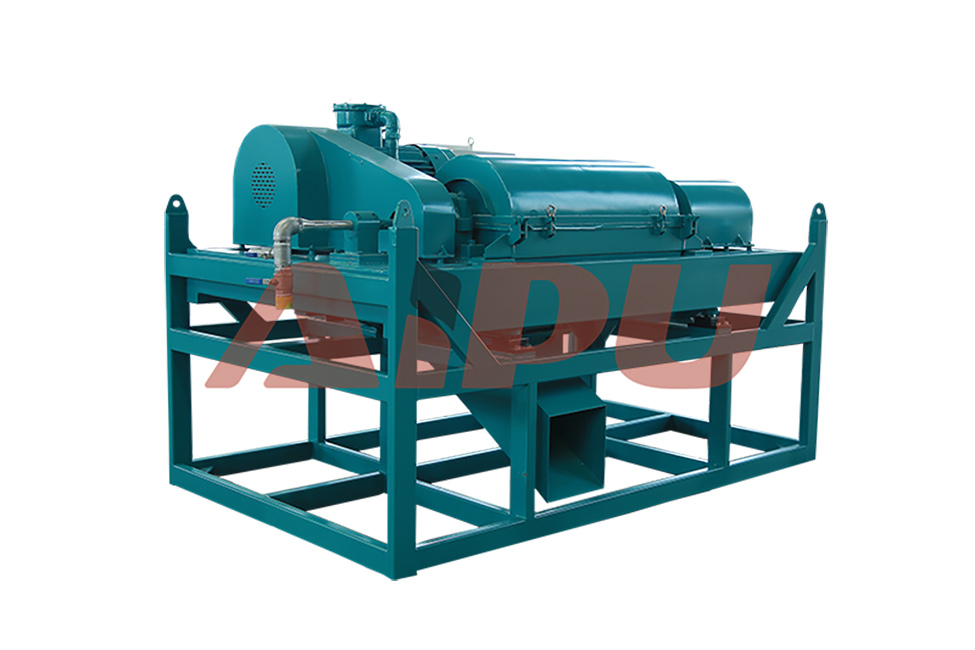Top Picks for Efficient Oilfield Operations
Onshore drilling operations demand high - performance solids control equipment to ensure the smooth progress of the drilling process, protect the environment, and reduce costs. This article will introduce the key aspects of high - performance solids control equipment for onshore drilling.
Importance of Solids Control in Onshore Drilling
In onshore drilling, the drilling fluid, also known as mud, plays a crucial role. It cools the drill bit, carries cuttings to the surface, and maintains wellbore stability. However, as the drilling progresses, the mud becomes contaminated with various solids such as rock cuttings. If these solids are not effectively removed, they can cause several problems. High - performance solids control equipment helps to maintain the proper properties of the drilling fluid, including density, viscosity, and filtration. This ensures that the drilling operation can proceed efficiently and safely, reducing the risk of equipment damage and wellbore instability.
Types of High - Performance Solids Control Equipment
There are several types of high - performance solids control equipment used in onshore drilling. The shale shaker is the first stage of solids control. It uses vibrating screens to separate large cuttings from the drilling fluid. A good - quality shale shaker can effectively remove cuttings larger than 74 microns. The desander and desilter are cyclone - based devices. The desander is designed to remove particles in the range of 40 - 74 microns, while the desilter can handle particles between 15 - 40 microns. The centrifuge is another important piece of equipment. It uses centrifugal force to separate fine solids and can remove particles as small as 2 - 5 microns from the drilling fluid.
Features of High - Performance Equipment
High - performance solids control equipment has several notable features. Firstly, it has high - efficiency separation capabilities. Advanced designs and technologies allow these equipment to separate solids from the drilling fluid more effectively, improving the overall quality of the fluid. Secondly, they are durable and reliable. Onshore drilling sites often have harsh working conditions, so the equipment needs to be able to withstand high - intensity operations and various environmental factors. Thirdly, many modern solids control equipment are equipped with intelligent control systems. These systems can monitor the operating parameters in real - time, adjust the equipment's performance automatically, and provide early warnings of potential problems.
Benefits of Using High - Performance Equipment
Using high - performance solids control equipment brings multiple benefits. From an economic perspective, it can reduce the cost of drilling fluid replacement. By effectively removing solids, the service life of the drilling fluid is extended, saving on the purchase of new fluid. In terms of environmental protection, proper solids control reduces the amount of waste generated during drilling. This helps to minimize the environmental impact of onshore drilling operations. Moreover, high - performance equipment can improve the overall efficiency of the drilling process, reducing downtime and increasing the productivity of the drilling rig.

Importance of Solids Control in Onshore Drilling
In onshore drilling, the drilling fluid, also known as mud, plays a crucial role. It cools the drill bit, carries cuttings to the surface, and maintains wellbore stability. However, as the drilling progresses, the mud becomes contaminated with various solids such as rock cuttings. If these solids are not effectively removed, they can cause several problems. High - performance solids control equipment helps to maintain the proper properties of the drilling fluid, including density, viscosity, and filtration. This ensures that the drilling operation can proceed efficiently and safely, reducing the risk of equipment damage and wellbore instability.
Types of High - Performance Solids Control Equipment
There are several types of high - performance solids control equipment used in onshore drilling. The shale shaker is the first stage of solids control. It uses vibrating screens to separate large cuttings from the drilling fluid. A good - quality shale shaker can effectively remove cuttings larger than 74 microns. The desander and desilter are cyclone - based devices. The desander is designed to remove particles in the range of 40 - 74 microns, while the desilter can handle particles between 15 - 40 microns. The centrifuge is another important piece of equipment. It uses centrifugal force to separate fine solids and can remove particles as small as 2 - 5 microns from the drilling fluid.
Features of High - Performance Equipment
High - performance solids control equipment has several notable features. Firstly, it has high - efficiency separation capabilities. Advanced designs and technologies allow these equipment to separate solids from the drilling fluid more effectively, improving the overall quality of the fluid. Secondly, they are durable and reliable. Onshore drilling sites often have harsh working conditions, so the equipment needs to be able to withstand high - intensity operations and various environmental factors. Thirdly, many modern solids control equipment are equipped with intelligent control systems. These systems can monitor the operating parameters in real - time, adjust the equipment's performance automatically, and provide early warnings of potential problems.
Benefits of Using High - Performance Equipment
Using high - performance solids control equipment brings multiple benefits. From an economic perspective, it can reduce the cost of drilling fluid replacement. By effectively removing solids, the service life of the drilling fluid is extended, saving on the purchase of new fluid. In terms of environmental protection, proper solids control reduces the amount of waste generated during drilling. This helps to minimize the environmental impact of onshore drilling operations. Moreover, high - performance equipment can improve the overall efficiency of the drilling process, reducing downtime and increasing the productivity of the drilling rig.








